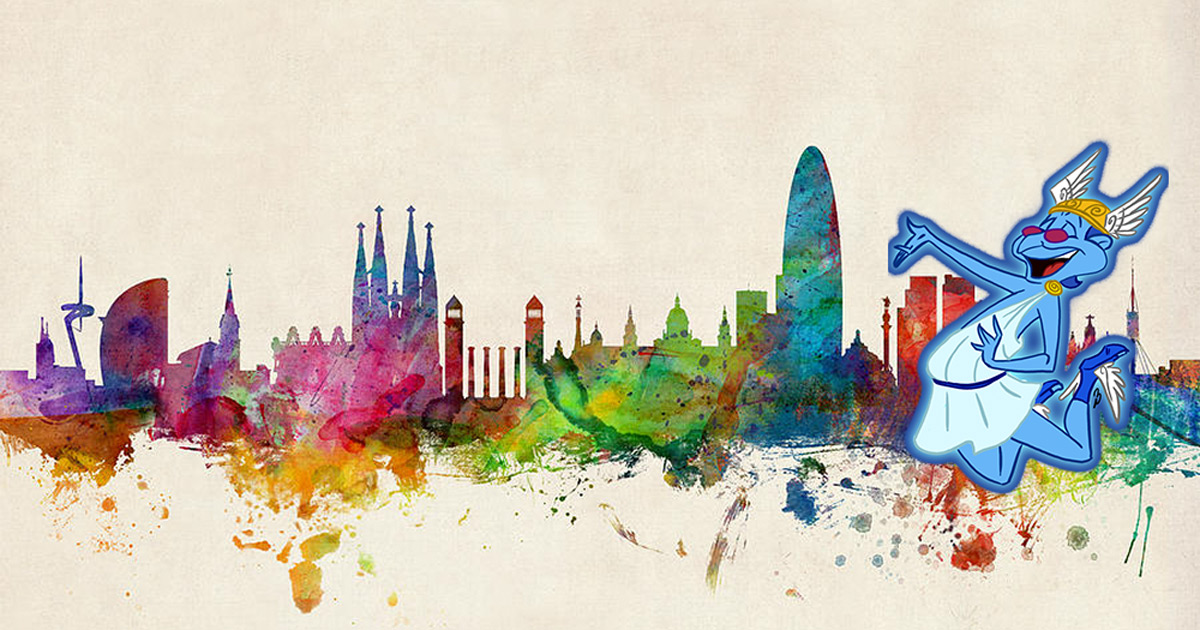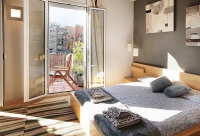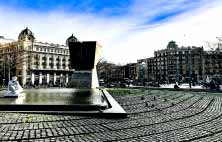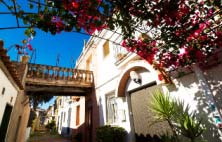The Mythological Founding Story of Barcelona
If you come to visit the capital of Catalonia, we will help you to find the best vacation rentals in barcelona. We offer apartments of different types, renovated and well furnished in all areas of Barcelona!

According to Greek mythology, the two brothers Hercules and Hermes began a long journey accompanying Jason and the Argonauts in search of the Golden Fleece. The total crew included nine boats, one of which was lost on the way and appeared right by where Montjuïc now stands today. They liked the place so much they decided to found a city and give it the name 'Barca Nona', which translates to 'Ninth Boat', a reference to the ninth boat lost.

The sculpture in the photo is from the 'Barcelona' series by the sculptor Frederic Marés and makes reference to the myth of the founding of the city. You can find it at Plaça de Catalunya.
How to recognized the god Hermes in Barcelona?
There are three distinctive features to Hermes:
- Winged Helmet (It's true that sometimes the wings arise from his hair rather than the helmet)
- The caduceus given to him by his brother Apollo in exchange for a lyre made of a turtle shell that enchanted him with its sound.
- The Talarias (or winged sandals) that give him speed.

Excursions in Barcelona
To make the most of Barcelona and fill your trip with unforgettable experiences and emotions, we offer you the excursions through the Catalan capital organized by our friends - the GetYourGuide team. Choose your excursion and fall in love with Barcelona:
Where in Barcelona can you find sculptures of Hermes
To know where you can find representations of Hermes, you should take into account the functions attributed to this God who, depending on the era, was attributed to represent certain characteristics.
In Greek mythology he was the messenger of the gods and was in charge of bringing their divine knowledge to the Underworld. In Ancient Egypt, Hermes was known as Thoth and was the god of wisdom; attributed as the inventor of language, and patron of the arts and sciences. During the rule of the Roman Empire, he was Mercury, the god of commerce, travellers, and thieves.
Perhaps it's that last role that is most representative of his abundant presence in Barcelona. Not due to the large number of pickpockets, no, rather that in the 19th century the Catalan Bourgeois adopted his image as the symbol of commerce and industrial progress.
As a result, Hermes has a privileged position on the buildings and streets related to:
- Financial centres such as bancos: The reason he is atop the wax museum is that the building was once the main headquarters of the Bank of Barcelona.

- Commercial trade centres like markets and stock exchanges and homes of what were once wealthy traders (along Rambla Catalunya and Passeig de Gracia are two prime areas).

- Industrial hotspots like factories.

Hermes may appear alone or accompanied by the Goddess of Fortune (with a cornucopia) or the Goddess of Industry (woman with a cog or a rudder).
There are even a group of bloggers that have made it their aim to hunt down and record all of the representations of hermes in Barcelona! That are called the "Cazadores de Hermes Barcelona!" (Barcelona Hermes Hunters).
Do you want to be a Hermes Hunter too? Well their is only one weapon you're going to need... Your camera! ;-)
Executive Summary
Hermes is a god who comes from Greek mythology. He was the messenger of the gods and in charge of transmitting divine knowledge to the Underworld. In Egypt he was known as Thoth (creator of writing, the arts, and sciences) and in Rome; Mercury (god of commerce, travellers, and thieves). The local myth of 'Barca Nona´considers him the founder of Barcelona together with Hercules (the true origins of Barcelona can be read here). However, it is not until the arrival of the splendor of the Catalan bourgeoisie, from the late nineteenth to mid twentieth centuries that Hermes is scattered across Barcelona as a symbol of industrial progress, trade, and business, which is why it is very common to find representations of Hermes all across buildings constructed during that period.











